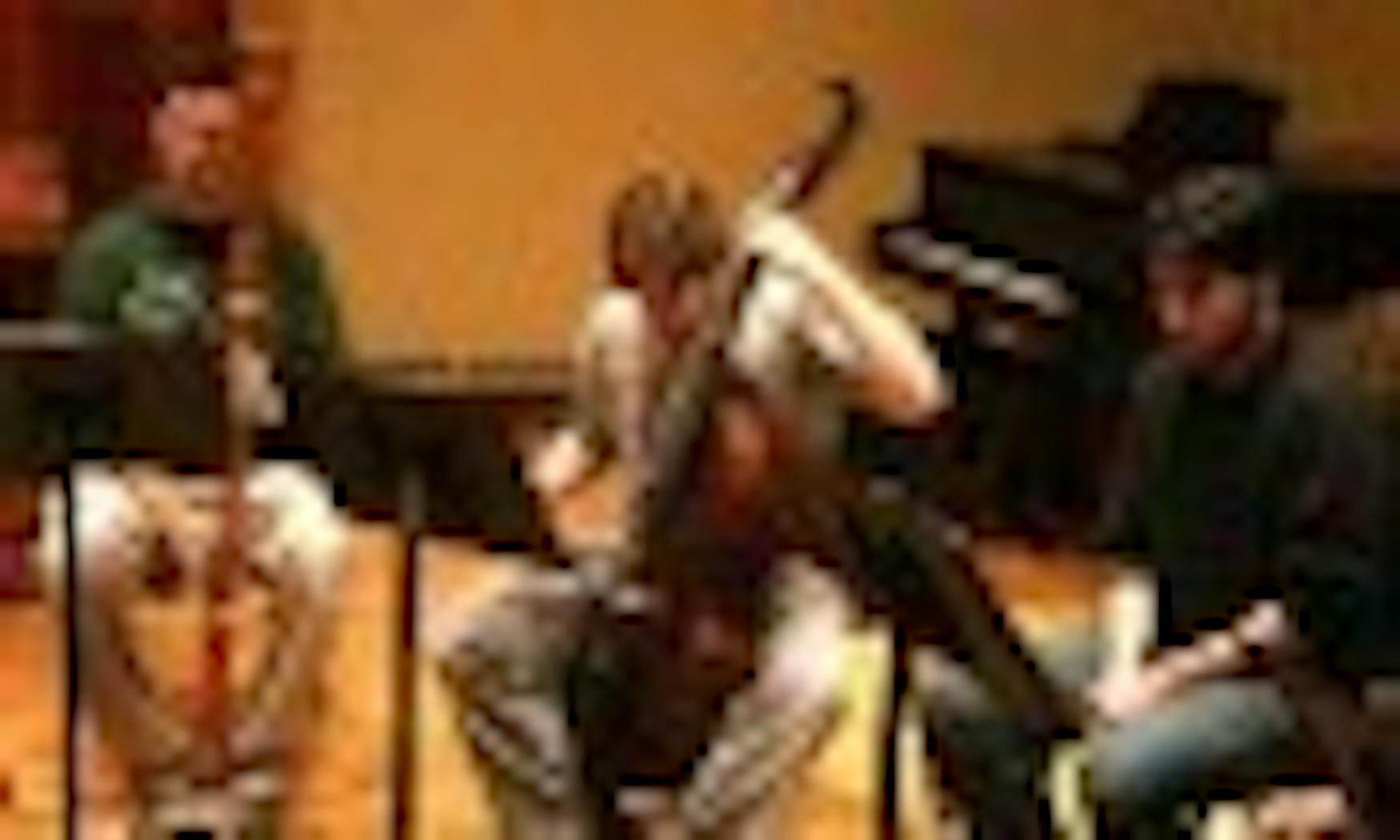EME revives Renaissance-era music
On the chilly evening of Wednesday, Nov. 19, Al Hoberman '09 is conducting a group of musicians unlike any other to play on the Slosberg stage. A six-foot-tall contrarecorder rests next to a delicately carved lute, which in turn rests next to vocalists singing ethereal harmonies that evoke piety and the transcendental as Hoberman leads a practice of the Early Music Ensemble. This 26-year-old Brandeis institution, directed by Prof. Sarah Mead (MUS), devotes itself to the authentic performance of music from the medieval and Renaissance eras of Europe.Hoberman says, "In ninth grade, we all had to do Renaissance projects, and I was a clarinet player, so I did mine on Renaissance woodwinds, and I thought the giant recorders and crazy instruments were just so cool. I said, 'One day, I want to play instruments like that,' and here I am." The EME's upcoming concert provides Hoberman and his fellow musicians an opportunity not only to play those really cool instruments, but to delve into Brandeis' own collection of early music texts and perform pieces that in some cases have not been heard since the 16th century.
According to the Robert D. Farber University Archives and Special Collections Department Web site, the Walter F. and Alice Gorham collection of works date from 1501 to 1650 and includes beautifully inscribed partbooks of vocal music and theory books. Mead explained in an e-mail interview with the Justice, "It is a thrill to work so closely with these books and to speculate about the people who originally purchased them and had them bound together with such care. We are handling the very same pages that people turned 450 years ago when the music was first brought to the public eye." Some of the marvelously preserved books still retain the original leather clasps or thongs that hold the books closed, and inside the pages are such nonmusical gems as portraits and seals of era royalty like Maximilian I. Occasionally, personal touches to the books bring us closer to the centuries-dead owners: In some works, students or readers altered what they possibly thought was incorrect text or opinion, and in one memorable instance, an enthusiastic reader added his own verse to a madrigal that, according to translation for the Justice by Prof. Richard Lansing (ROMS), is an effusive paean to the writer's "beautiful Cloris."
One particular rarity in the Gorham Collection is a collection of partbooks of the music of Carlo Gesualdo. Not only are the alto parts the only ones extant in the United States, but, according to Katherine Schram '09, "the really interesting thing about the harmonies in Gesualdo is that he predates or predicts in several ways 20th-century harmonies ... [His] use of counterpoint and chromatic notes is pretty similar to how a lot of composers, once they left tonality in the 20th century, used notes as well." Hoberman, Mead and Schram agree that Gesualdo and his contemporaries provide modern listeners with auditory experiences not often found in concert halls that might focus on providing Brahms and Beethoven. Early music "is written in a whole different way, in a different tradition that has a whole lot of beauty," says Hoberman. Mead says that she was particularly drawn to how early music "emphasizes equality and interdependence among all the parts while still requiring a high level of rhythmic and melodic sophistication from each individual," unifying music, speech and prayer.
The Early Music Ensemble will perform the Gesualdo and other medieval and Renaissance works at 3 p.m. Dec. 7 in Slosberg Recital Hall.



Please note All comments are eligible for publication in The Justice.